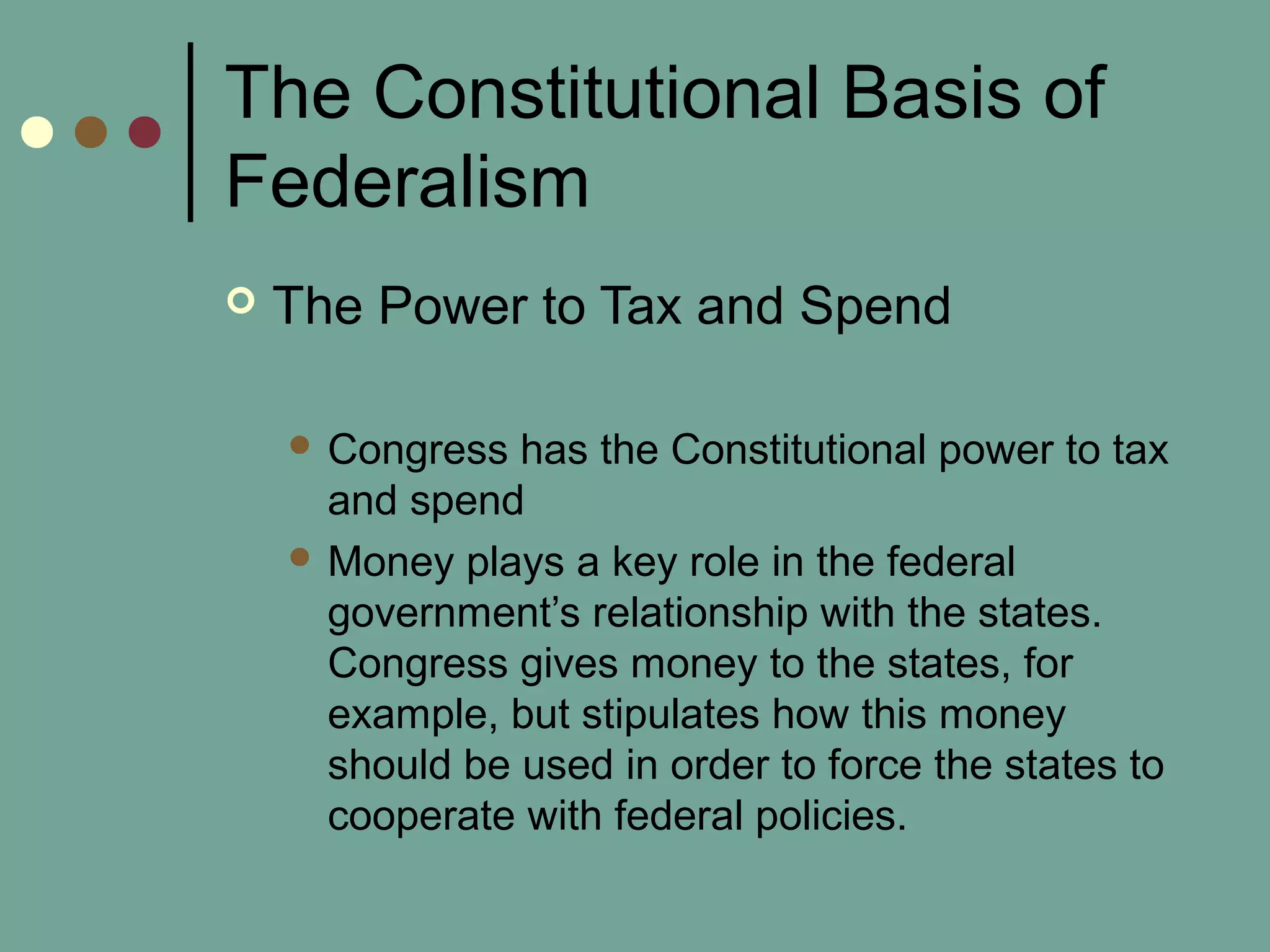This document provides an overview of federalism in the United States. It summarizes key aspects of federalism including how power is divided between the federal and state governments constitutionally, how federalism has evolved from dual to cooperative federalism, and how fiscal federalism works through grants. It also discusses advantages and disadvantages of federalism for democracy in the US.












































